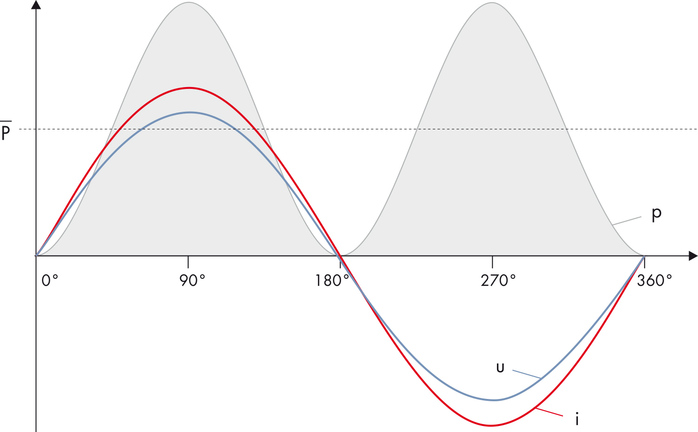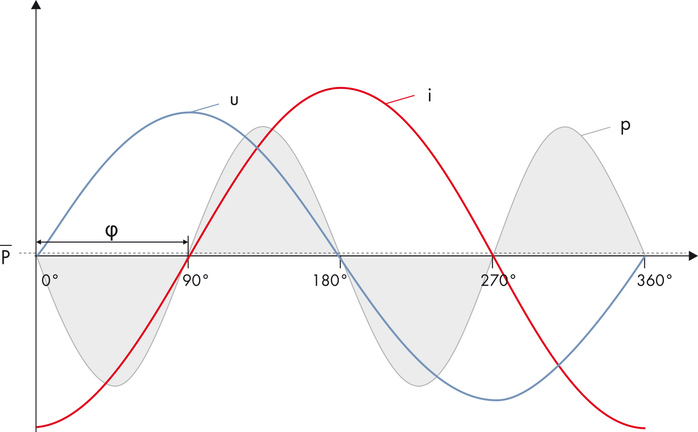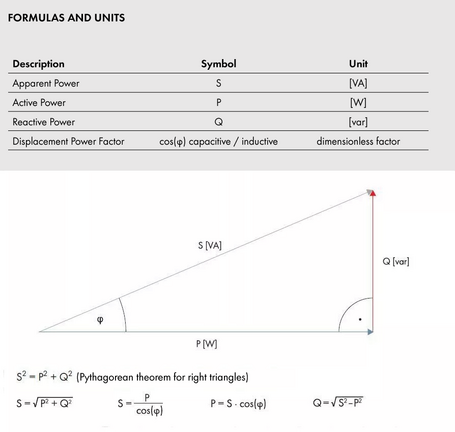- AustraliaEnglish
- BelgiumDutchFrench
- BrasilPortuguese
- CanadaEnglish
- FranceFrench
- GermanyGerman
- GlobalEnglishFrenchSpanish
- GreeceGreek
- IndiaEnglish
- ItalyItalian
- JapanJapanese
- LuxembourgFrench
- Middle East & AfricaEnglish
- NetherlandsDutch
- PolandPolish
- PortugalPortuguese
- SpainSpanish
- SwedenSwedish
- TurkeyEnglish
- United KingdomEnglish
- United States of AmericaEnglish
SMA shifts the phase
Why reactive power matters and how SMA technology supports grid stability


Reactive power is generated whenever electric energy is transferred via alternating current. For grid operators, reactive power is essential to keep the alternating current grid stable. In the future, reactive power will be procured via a market-based procurement in Germany and is therefore becoming more relevant for electric utility companies, system planners and operators, system integrators and installers, regardless of the system size.
Key finding: Reactive power fed into the grid is not a problem. On the contrary, it can even help solve many challenges in grid integration and energy transport. Those who provide reactive power beyond the minimum requirements set by the grid connection standards will be able to participate in the ancillary services market in the future. SMA offers the right solutions to support this.
Technical Requirements for Generation Plants and Control Systems
Decentralized power-generating plants, battery storage systems and electrolyzers (including their rectifiers), along with their associated plant controllers, must be able to provide reactive power on various grid levels in accordance with the current grid connection standards. Systems such as SMA’s Medium Voltage Power Stations (MVPS) must also be able to supply the required reactive power to meet grid requirements.
The current Grid Development Plan and stability reports issued by the transmission system operators clearly show that the importance of reactive power for electricity transmission and overall system stability is increasing. As conventional power plants are decommissioned, the energy supply becomes increasingly decentralized, and grid expansion continues to lag behind, the need for reactive power is growing to ensure grid stability and prevent voltage drops.
With the implementation of EU Directive 2019/944 into national law and the decision of the German Federal Network Agency (Bundesnetzagentur) dated on June 25, 2024, it is now clear: the increasing demand for reactive power in Germany is to be met via a market-based and economically efficient procurement process, as a non-frequency-related ancillary service. This marks reactive power as a new and lucrative source of revenue within the electricity market.
For planners and operators of PV and storage systems, but also for consumers such as electrolyzers, reactive power brings new opportunities and new technical requirements. That’s reason enough to take a closer look at the topic: What is reactive power? What is it used for? What is currently required of PV systems, battery storage systems and electrolyzers and what will be required in the future? What solutions does SMA offer to address these challenges?
Reactive power simply explained
Reactive power can be compared to the income and expenses of a fictional business: In January, the company earns €10,000; in February it spends €10,000. This cycle continues month by month. While the net profit at the end of the year is zero, both the income and expenses were essential to keep the company running for example covering salaries, rent and material purchases.
Reactive power in the electrical grid works in a similar way: Although it does not deliver usable energy to end consumers, it is essential for maintaining grid stability, compensating for voltage fluctuations, and ensuring the efficient operation of electrical systems.
How is reactive power generated?
In direct current (DC) systems, the equation is simple: power equals voltage multiplied by current.
In alternating current (AC) systems, however, both the magnitude and direction of voltage and current change continuously. In utility grids, these quantities follow a sinusoidal waveform at a frequency of 50 hertz (e.g., in Europe) or 60 hertz (e.g., in the U.S.), the globally recognized standards.
As long as current and voltage are in phase, meaning their sine waves oscillate synchronously and reach their peaks and zero crossings at the same time, the result is a pulsating power curve with a positive average value: this is pure active power (see Fig. 1a).

However, if the sinusoidal waveforms of current and voltage are out of phase, the resulting power alternates between positive and negative values. In the extreme case, when current and voltage are shifted by a quarter of a cycle (90 degrees), the current reaches its maximum exactly when the voltage is zero, and vice versa. The result is pure reactive power, where the positive and negative portions of power cancel each other out entirely (Fig. 1b).

This phase shift occurs whenever inductors (coils) or capacitors are present in an AC circuit, which is practically always the case. Electric motors and transformers contain inductors that cause an inductive phase shift, while capacitors cause a capacitive phase shift. Even standard multi-core power cables can behave like capacitors, while high-voltage overhead lines can act like extended inductors.
As a result, a certain degree of phase shift and therefore reactive power is unavoidable in alternating current systems.
The extent of this shift is described by the displacement power factor cos(φ), which ranges from 0 to 1. This factor is critical for calculating and managing the different types of power –active and reactive–in modern energy systems (see info box below).

Capacitive reactive power increases voltage (similar to overexcitation), while inductive reactive power decreases voltage (similar to underexcitation).
How does reactive power affect the power grid?
Reactive power is an unavoidable component in AC power systems and has no direct practical use, as it cannot perform actual work. Only active power is usable. It drives motors, lights up lamps, or powers electric heaters. Reactive power, by contrast, continuously oscillates back and forth within the grid without being consumed.
This creates additional load on the grid, as all components such as transmission lines, switches, transformers, and other equipment must be designed to handle the apparent power, the geometric sum of active and reactive power.
In practical terms, this means these components must be dimensioned for the apparent power S, not just the active power P. Since power transmission in the grid depends on the apparent power, increased reactive power leads to greater ohmic (resistive) losses, resulting in higher energy losses during transmission.
A high share of reactive power can therefore reduce the overall efficiency of the grid and increase operational costs for grid operators.
Relieving grids and regulating voltage
Fortunately, existing phase shifts in the grid can be compensated. All that is needed is an opposite phase shift, achieved through compensation coils, compensation capacitors or increasingly through inverters. This reduces transmission losses and ensures that only the active power places a load on the public power grid. As a result, freed-up transmission capacity can be used to transport additional active power.
Capacitive or inductive phase shifts also have another important effect: they can raise or lower voltage levels in the grid. In large-scale power plants, energy is typically generated with a capacitive phase shift in order to counteract the voltage-reducing effect of inductive overhead lines and transformers.
That’s why controlling phase shift –or, more precisely, reactive power– is essential for voltage regulation. And this doesn’t just apply to conventional power stations: PV systems, battery storage units, and electrolyzers across various grid voltage levels must also contribute to voltage stability through reactive power management.
Current requirements for the provision of reactive power
According to the Medium Voltage Directive issued by the German Association of Energy and Water Industries (BDEW), which came into effect in 2010 and has since been replaced by technical connection rules, grid operators are entitled to require decentralized generation systems to feed in inductive or capacitive reactive power with a displacement power factor of at least 0.95.
In practice, however, many grid operators –especially in Germany– already demand stricter requirements today to ensure grid stability. In many cases, a reactive power feed-in with an even tighter displacement factor of up to 0.90 is required at existing grid connection points. In the high and extra-high voltage levels, the requirements are even more detailed (see VDE-AR-N 4120 and VDE-AR-N 4130).
This trend is also evident in the low-voltage grid. The Low Voltage Directive (VDE-AR-N 4100 and VDE-AR-N 4105) also requires the provision of reactive power to compensate for voltage fluctuations and maintain grid stability.
There are different ways for a power plant to support the grid with reactive power under normal operating conditions. One common method is for the inverter to supply reactive power based on a measurement at its own terminals. In this setup, control functions are often based on the level of active power feed-in. For example, the cos(φ) function ensures that the more active power the inverter produces, the more reactive power it also supplies.
Another approach is to provide reactive power at the point of interconnection (POI), which is typically required for larger plants connected to high-voltage grids. In this case, a central system controller measures the grid voltage at the high-voltage level and commands the plant to inject or absorb reactive power accordingly, often using a so-called Q(U) function, which operates within a predefined voltage dead band. The controller sends setpoints to the inverters to stabilize the voltage as close as possible to the grid's needs.
The background: the feed-in of active power in low-voltage grids often leads to voltage rises that can endanger grid stability (see fig. 3). To counteract these voltage increases and keep the voltage at a stable level, compensation through reactive power is required. These developments highlight the growing importance of reactive power as an essential element of modern grid control and system stability.
In the event of large voltage dips or rises in the transmission grid –for example due to a short circuit– reactive power support is also required. In such cases, the displacement factor may fall well below 0.9, depending on the grid operator’s requirements. This behavior is referred to as Fault Ride Through (FRT) capability.
New requirements for reactive power in the German energy market
Procurement concept for non-frequency-related ancillary services (reactive power provision):
- Under the new procurement concept, providers of non-frequency-related ancillary services must meet specific requirements for reactive power provision if they wish to participate in the reactive power market.
- This includes specifications for the displacement power factor and provision criteria for decentralized generation systems.
- Further details can be found here: https://www.bundesnetzagentur.de/EN/RulingChambers/Chamber6/Chamber6.html
Grid forming and inertia:
- The next generation of inverters, the so-called grid-forming inverters, will enable fast and continuous voltage regulation via reactive current, effectively acting as a voltage source behind an impedance. This significantly enhances stability, both under normal conditions and during grid disturbances.
- Detailed requirements are currently being developed and are subject to ongoing technical discussions and standardization.
- For more information, refer to the VDE FNN publications: Netzbildende Eigenschaften entscheidend für Systemstabilität (in German)
Requirements for electrolysers:
- Electrolysis plants must meet minimum standards for the injection and control of reactive power to ensure efficient integration into the public grid.
- Specifications include requirements related to grid stability and the reactive power capabilities of the systems.
- More information can be found here: Requirements for the connection of electrolyser facilities
Product and system solutions from SMA
All SMA inverters and system solutions are designed to provide and control reactive power. In addition, SMA offers rectifiers for electrolyzers that play a crucial role in reactive power compensation and grid integration. SMA also supplies plant controllers and comprehensive system solutions such as the MVPS (Medium Voltage Power Station), which are tailored to the specific requirements of reactive power control and grid stability.
With Sunny Design, SMA provides a powerful planning tool that helps professionals design PV systems and electrolyzer setups optimally. It allows simulation of different scenarios to ensure that the systems meet the requirements for reactive power provision and grid integration.
SMA’s Engineering Support also offers customized consulting for system design and the creation of simulation models.
SMA PV inverters can provide reactive power both during the day and at night (Q on demand). At night, they draw power from the utility grid to safely regulate reactive power at the point of interconnection, subject to the control concept approved by the grid operator. This feature is particularly beneficial for industrial facilities operating during nighttime hours.
Planning with reactive power
When planning PV, storage, or electrolyzer systems, it is essential to take reactive power into account. The key parameter here is the desired or required displacement power factor cos(φ), which determines the apparent power and, consequently, the additional inverter capacity required.
For example, a displacement power factor of 0.95 results in an apparent power that is 105.26% of the active power. This means that for an active power of 100 kW, the inverter must have a rated apparent power of at least 105 kVA (see Fig. 2).
It is important to note that the inverter still delivers the full active power. Reactive power is provided in addition and must be accounted for in the inverter’s capacity. This means that the inverter needs to be sized accordingly.
To support precise system planning and inverter dimensioning with reactive power in mind, the free Sunny Design software from SMA offers a wide range of functions for calculating all relevant reactive power requirements.

Solving problems with reactive power
In certain situations, feeding reactive power into the grid can be advantageous for the plant operator. For example, it may be the case that a plant can feed in only a limited amount of active power because doing otherwise would cause the grid voltage to exceed permissible limits, leading to the disconnection of inverters from the grid. This scenario often occurs in the low-voltage grid, which is primarily resistive, where active power feed-in noticeably influences the voltage.
For systems below 30 kWp, this is typically the grid operator’s responsibility, as they must provide a sufficiently dimensioned connection point. However, for larger plants, the most economically viable solution must be identified – regardless of whether the costs are borne by the system operator or the grid operator.
Voltage control via reactive power feed-in may represent the most cost-effective alternative in such cases. With an appropriate phase shift generated by the inverter, the increase in voltage at the point of interconnection can potentially be compensated to a degree that avoids violation of voltage limits (see Fig. 3). This can eliminate the need for costly grid expansion (affecting the grid operator) or for selecting a more distant point of interconnection (affecting the system operator).
While providing reactive power requires additional inverter capacity –unless a reduction in active power is acceptable– the investment pays off if it helps avoid feeding in significantly less active power or having to connect at a different grid interconnection point.

Conclusion: No need to fear reactive power
Reactive power is far more than just an unavoidable byproduct of AC power systems – it is an active and essential component that helps keep the grid stable, efficient, and future-ready. It enables the optimal integration of renewable energy sources, modern storage technologies, and consumers such as electrolyzers into the existing grid infrastructure.
Moreover, the provision of reactive power opens up new business opportunities for operators of decentralized generation systems and battery storage systems (BESS) by creating additional revenue streams. In this way, reactive power not only supports the energy transition but also makes it more economically attractive.